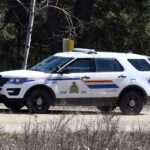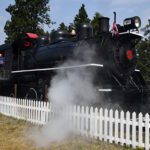Home »

Expect the unexpected; more counts coming
East Kootenay Christmas Bird Counts are a yearly occurrence where people get together to share their passion for birds and the environment.
We can look forward to the Cranbrook count on Wednesday, December 28 and the Kimberley count on Wednesday, January 4, 2017. Contact Greg 489-2566 re: Cranbrook, and Dianne 427-1921 re: Kimberley.
On both occasions, we meet at 8:45 a.m., organize ourselves into groups and examine a predetermined ‘pie-shaped’ area within a circle having a 24-km diameter. The circle stays the same from year to year, but may be a bit uneven allowing us to stretch out and include small areas favourable to birds. These areas could include patches of open water, a remote concentration of feeders or a particular type of habitat.
‘Feeder Watchers’ are always welcome; the birds seen at your feeders are a valuable contribution.
Last week, birders from Fernie and it’s neighbouring communities including Cranbrook and Crowsnest Pass, teamed up to count the Fernie Circle on December 15.
In addition to Count Day, the three days preceding and three days following count day, known as ‘Count Week’, have some significance to the resulting tally. The preceding days revealed a wide variety of species, and provided an incentive and expectations for a good day. Indeed, the result of the 11th Fernie CBC was 45 species, including ‘count week’. This beats the 42 specie total in 2009, and quite the opposite of last year’s all time low of 28.
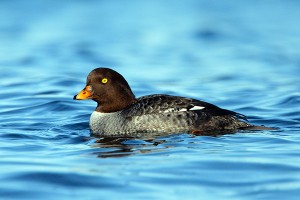
Count Day was cool and calm, with good visibility, and sunny breaks allowed the afternoon temperature to climb to minus 8. The bountiful berry crop this year certainly helped waxwing numbers and likely kept a few robins around. Largely absent, though, were the pine Grosbeaks, while the other ‘winter finches’ were difficult to detect. The reason may be a result of the abundant cone and catkin crop in the surrounding forests; birds were therefore not concentrated in the narrow strip of the Elk Valley. Oddly, there were a few missing species, such as Barrow’s Goldeneye, Pacific Wren and Merlin, but wigeon, teal and one ‘other’ were found.
One unexpected bird was confirmed as we looked down from the road shoulder into a spring fed riparian area, which often has open water. Despite bitter cold during the previous few days and nights, not only was there an open patch, but radiating ‘rings’ suggested something was moving. Indeed, it was a small, rusty, handsome ‘Rail’.
The Virginia Rail, which will breed as far north as the southern interior of B.C., migrates back to the Southwest and Mexico in winter. A secretive bird of freshwater marshes, the Virginia Rail often remains hidden in dense vegetation. It feeds on insects, insect larvae, aquatic invertebrates, fish, frogs and small snakes.
The Virginia Rail possesses many adaptations for moving through it’s habitat, including a ‘laterally compressed’ body, long toes and flexible vertebrae. The forehead feathers are adapted to withstand wear from pushing through dense marsh vegetation. This bird can swim underwater, propelling itself with it’s wings. It swims in this way probably only to flee predators. Curiously, this and other rail species have the highest ratio of leg muscles to flight muscles of any bird. They build numerous ‘dummy’ nests in addition to the one where eggs are actually laid. Nests consist of a basket of loosely woven vegetation, often with a canopy, usually placed above shallow water.
During spring, Virginia Rails have been spotted around Elizabeth Lake in Cranbrook. A couple of years ago, one was seen at Christmas; a second one appeared a few days later. Despite the freezing temperatures and lack of open water, the birds were observed for several weeks. It’s always a good idea to look and listen carefully, be critical of your observations and expect the unexpected.
Fernie CBC Results
Mallard 272
Common Goldeneye 5
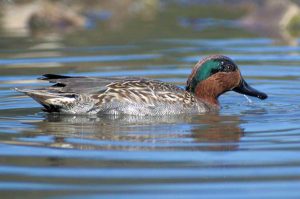
Green-winged Teal 2
Common Merganser 5
American Wigeon 1
Ruffed Grouse 1
Bald Eagle 8
Sharp-shinned Hawk 1
Northern Goshawk 2
Killdeer 1
Wilson’s Snipe 1
Virginia Rail 1
Eurasian Collared-dove 2
Rock Pigeon 4
Northern Pygmy Owl 2
Belted Kingfisher (count week)
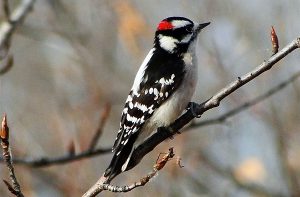
Downy Woodpecker 8
Hairy Woodpecker 1
Northern Flicker 16
Pileated Woodpecker 1
Northern Shrike 1
Grey Jay 1
Steller’s Jay 11
Blue Jay 5
Black-billed Magpie 18
American Crow 17
Common Raven 61
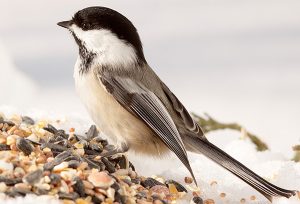
Black-capped Chickadee 140
Mountain Chickadee 26
Red-breasted Nuthatch 6
White-breasted Nuthatch 4
Brown Creeper 1
Golden-crowned Kinglet 18
American Dipper 9
American Robin 7
European Starling 54
Bohemian Waxwing 1,808
Song Sparrow 5
Dark-eyed Junco 8
Pine Grosbeak 1
House Finch 45
White-winged Crossbill 1
Common Redpoll 77
Pine Siskin 10
House Sparrow 6
Lead image: Naturalist Stewart Wilson photographed this Virginia Rail at Elizabeth Lake a couple of years ago.
Submitted by Daryl Calder on behalf of Rocky Mountain Naturalists and Fernie Nature Club
